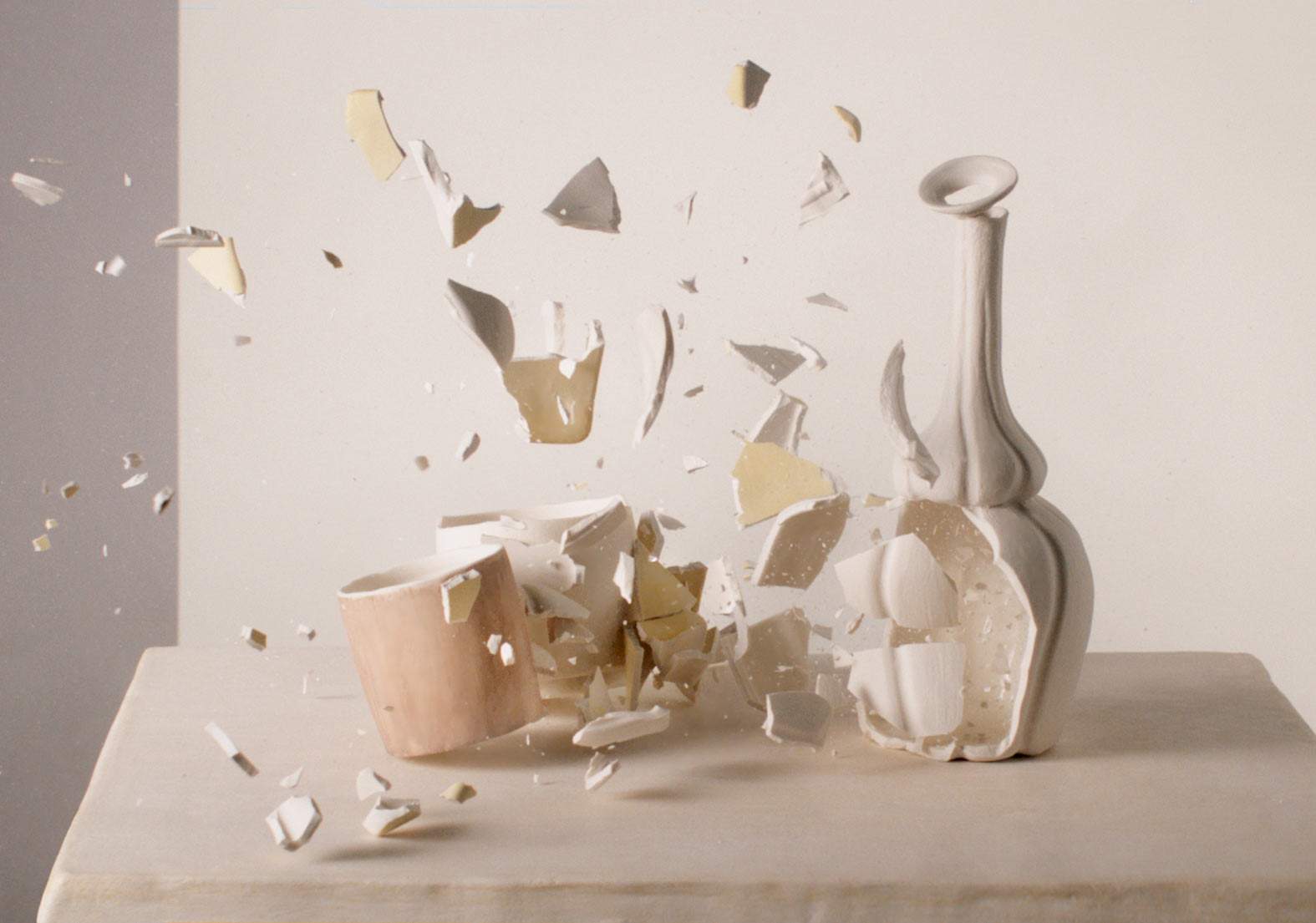Milan, Israeli Ori Gersht's destructions on display at Galleria Bianconi
From February 3 to April 3, 2022, Galleria Bianconi in Milan is hosting Revelations in the folds of time, a solo exhibition by Israeli artist Ori Gersht, curated by Ermanno Tedeschi and under the patronage of the Cultural Office of the Embassy of Israel in Italy.
All of Ori Gersht’s work, writes Ermanno Tedeschi in the exhibition’s presentation text, “is pervaded by that feeling of movement stopped in time. A painstaking arrangement of elements that is suddenly struck by a burst. In this apparent violence, the artist immortalizes a serenity that goes beyond nature. In a sense he makes still life alive, capturing it in the infinitesimal moment in which it deflagrates, only to rest on the ground, destroyed.” His artistic research has always explored the relationship between memory, history and landscape, adopting a metaphorical and seductive aesthetic language in which he seeks to capture the entropic tension between order and disorder, representing the conflict and violence present in history and hidden in the folds of reality.
The exhibition itinerary opens with two large works from the latest Becoming cycle, reflecting on the construction of historical memory as it is presented to us and handed down by the great Western museums, in which the apparent order of the narrative actually conceals wreckage, wreckage, fragments extracted from their original contexts. To create these works, Gersht planned to recreate an amplified narrative using bookshop postcards sold by major Western museums such as the Metropolitan Museum of Art in New York, the Getty Museum in Los Angeles, and the Rijksmuseum in Amsterdam. The artist, using hundreds of postcards, thus intends to generate a new order by printing each postcard on a sheet of glass and placing them one by one on a new “wall,” and creating a new narrative that he then destroys. Gersht, with the air rifle, shatters the wall and lets the camera capture this moment as a stream. It is thus, as the artist himself states, that “a new kind of visual space is generated: a purely photographic space where the past and the future meet: this is the photographic ’now.’” This process is repeated in the works of the Flowers series with which the exhibition continues. In them Ori Gersht creates still life arrangements, which again refer back to the pictorial tradition of Italian and Flemish art and which he takes out of their original context to immortalize them just as they are being blown up.
The exhibition concludes with the room devoted to Giorgio Morandi. In these works, from the New Orders - Evertime series, Gersht reconstructs the Italian artist’s typical still life theater and then optically immortalizes it at the moment of its explosion. Like Giorgio Morandi did, Ori Gersht, too, attempts to transcend the boundaries of mere exteriority, waging a battle against the ephemeral, the insubstantial and the superfluous, with an almost sacred rituality and care, only to then submit to the realization that things fall apart.
For all information you can visit the Bianconi Gallery website.
Pictured: Ori Gersht, New Orders, Evertime 21 (2021; archival pigment print, 35 x 43 cm). Courtesy of the artist and Galleria Bianconi.
 |
| Milan, Israeli Ori Gersht's destructions on display at Galleria Bianconi |
Warning: the translation into English of the original Italian article was created using automatic tools. We undertake to review all articles, but we do not guarantee the total absence of inaccuracies in the translation due to the program. You can find the original by clicking on the ITA button. If you find any mistake,please contact us.




























